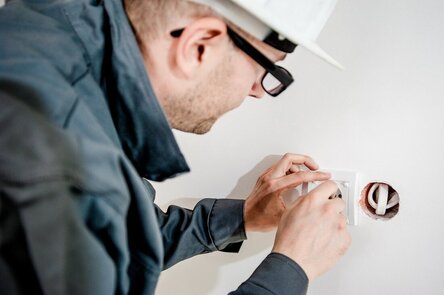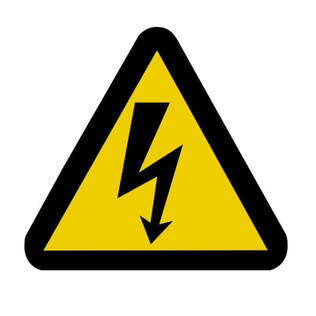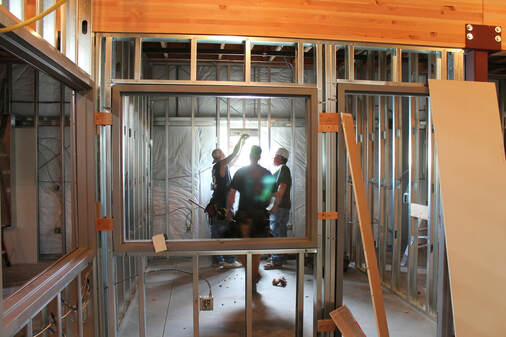|
With lots of extra time around the house, it’s no wonder so many people are doing remodeling projects. (Home improvement ideas if you quarantined at home by coronavirus) With the pandemic causing us to spend more time indoors, our focus is often placed on that bathroom remodel we’ve been dreaming about, updating our garages, or carving out our ideal bedroom layout. It’s easy to have a lot of ideas but not know where to start. From planning colors to hiring contractors for your roof, it’s tough to keep all your information in one place. Luckily, there are several apps that can make your life easier, and help you cover all the steps of your renovation, from A to Z. Not to mention, with apps like these it’s easy to keep track of what items you’ll need to buy, where you can find everything, how you can stay within your budget and make sure your new home is safe. Saving time and effort on the logistics can help you put more of your heart and energy into the changes you want to make to your house. Below are the top 5 renovation apps to help you get started today. Top 5 home renovation appsHouzz - for home design overall Houzz keeps all your home renovation needs in one place. You can browse through styles and ideas, imagine items and renovations in your space with a virtual reality feature, and even speak to professionals about a certain idea. On top of that, you can even hire an expert to execute ideas in your space. Read: Steps to constructing your new house. Part 1 Magicplan - for contracting made simple Magicplan makes contracting and floorplanning an absolute breeze. What if you could scan your space, press a button on your phone and automatically create a digital model of your home? This is exactly what Magicplan does. Once you scan the area of your home, Magicplan will give you an interactive floor plan that allows you to sketch changes directly and even receive an estimate. Could it get any simpler? See also Deciding what you want and what you need when planning and designing your new house and Designing the layout of your new home Home Design 3D - for interior design Having trouble imagining how things will look in your space? Luckily, the Home Design 3D app lets you tweak your home digitally. With this app you can change details such as lighting, rearrange and remove furniture, and create easy, beautiful models of your home in 3D. The best part is, when you’re ready to make changes in real life, you’ve got a detailed model to send to your collaborators. iScape - for landscaping When it comes to sprucing up your yard, we’ve got a tool you’ll love. iScape helps you design the yard you’ve been dreaming of. In addition to this, it provides valuable insight on what tools and materials you might need to carry out your dream projects. Through the app, you can hire professionals, find out how to save money on materials, and make sure you’re getting the absolute best care for your yard. ProjectColor by the Home Depot - for painting We all know that color can make or break a room. If one of your rooms is feeling a little dull, a quick repaint can make a world of difference. Deciding on the perfect color can be time consuming and stressful without the right help, which is why there is Project Color by Home Depot. With this app you can test out how different colors will look in your space. On top of that, you even get suggestions for colors that will complement the wall color, so you can truly take advantage of the change and make your room pop. See also Tips for Selecting Exterior Paint Colours for Your Home ConclusionNo matter where you start with home improvement, you’ll want to make sure your home is protected. With all you’re investing in your new home, there are lots of opportunities for damage, unexpected mistakes and other future costs. Even the best of home renovations carry a risk, so it’s important to check with your home insurance provider, to make sure you’re well covered. (Read Before starting your home building project check your insurance) If you choose to go DIY, you may save lots of money up front, but it will pay to play it safe. You’ll want to make sure you speak with your home insurance provider, to see how easy it can be to keep your property and investments protected while you improve your home. Author bio: Sarah Hollenbeck is a writer and homeowner from Austin, TX. Having just bought her first home before the Austin market exploded, she works hard to help other homeowners learn how to make the most out of their investment. Other Useful Articles: 10 Tips to Help Couples Survive a Home Renovation Project Questions to ask before starting a home renovation, or building a new house 20 Helpful Home Renovation Apps for 2021 Want to learn more about designing, renovating and building houses?Paul Netscher has written several easy to read books for owners, contractors, construction managers, construction supervisors and foremen. They cover all aspects of construction management and are filled with tips and insights.
Visit to read more. The books are available in paper and ebook from most online stores including Amazon.
0 Comments
Homeownership often necessitates a basic knowledge and know-how of a home’s systems like its electrical system. While you certainly don’t have to be an electrician to understand some of the basic components of your home’s electrical system, you should know when your system requires the services of one or what electrical issues you can tackle yourself. In this article, we’ll provide an overview of electrical basics and what the various components of your electrical system do. We’ll also explore some common household electrical problems and how you might address them. Keep in mind that electricity is dangerous. You should never attempt to maintain or repair your electrical system without knowledge and experience. If you’re in any doubt about an electrical problem, you should always contact a qualified electrician. Home Electrical Basics 101Some homeowners may not be aware precisely of what they are responsible for when it comes to their home’s electrical system. First, be aware that the utility company is responsible for the line portion of customers’ electric service. This includes all maintenance, repairs, and replacement costs for equipment up to the line’s attachment point to the home. At the point of attachment to the house, the homeowner is responsible for the costs of repairs or replacement parts. The home’s electrical system is made up of many different components. These components work together to provide electrical power to the house. If something goes wrong with one of them, the system will be affected, and the homeowner will need to take measures to troubleshoot the problem and apply the necessary fix, even if that fix is to contact a certified electrician. Home Electrical ComponentsHaving a basic knowledge of your electrical system’s components is essential so that you can understand how they work and when they may be malfunctioning. Here, we’ll provide a brief overview of each of your system’s primary parts. Electrical Meter The utility company provides service cables to your home’s electrical meter. These cables may be above or below ground. The cables extend the meter’s base and deliver power service to the home. The meter itself measures the amount of your electricity usage so that the utility company knows what to charge you on your electric bills. The meter measures each instance when electricity is used in your home. As you already likely know, the more the meter registers electricity use, the higher your electric bill. Main Service Panel From the meter, the electrical service feeds will extend to your home’s main service panel. Typically, people refer to this panel as the breaker box. Two large wires connect to screw terminals referred to as “lugs.” These lugs are located in the breaker box and power the entire panel. There is also a neutral panel (the other two wires are ‘hot’ wires). Electricity travels through the hot wires to the breaker box and then through your home’s electrical system. The electricity completes the circuit by returning to the box via the neutral wire. Main Circuit Breaker Within your service panel is a large main breaker. This main circuit breaker is a switch that controls power to the rest of the circuit breakers in the panel. Its size depends on the electrical service capacity of the home. Standard panels, for instance, offer a 200-amp service. Older panels, however, may only offer 150 or even fewer amps. (Read Electrics for your new home build part 2 Understanding Electrics in Your New Home Build) Whatever the maximum amp service, the main circuit provider will allow. For instance, if the maximum amps are 200, the main breaker will allow that much electrical service. If electrical use exceeds 200 amps, the main circuit breaker will trip, cutting off power. No current flows to the panel when the main breaker trips. Turning off the main breaker means that none of the other breakers in your panel will receive power. The result, of course, is no electricity for any of your home’s circuits–no power to the refrigerator, lamps, computer, television, etc. On the other hand, remember that electricity is still present in the service wires connecting to the lugs. Unless you shut off the power disconnect switch or your utility company shuts off the power, there will still be power—just not at your circuits. Disconnect Switch The disconnect switch is typically located on the home’s wall near their electricity meter. You may need to turn off power in the event that you’re having electrical work done on your home. Not all houses have a disconnect switch. If yours does not, the main circuit breaker serves as the system’s disconnect switch. Branch Circuit Breakers Your breaker box will include a series of breakers in addition to the main circuit breaker. Each breaker controls the flow of electricity to a branch circuit. For instance, one breaker might be associated with electricity to the laundry room, another to a section of the second floor, and still another to the kitchen. If electrical use exceeds the branch allowance of electricity, it will trip, cutting off electric flow to the branch circuit. For instance, running too many kitchen devices at once can cause the breaker to trip. It will need to be reset. Then, you’ll have to reduce the number of devices you’re using at once. Preventing Damage to Your Home's Electrical SystemMost people don’t think about their home’s electrical system until something goes wrong. However, there are steps you can take to protect this essential system of your house. For instance, you should repair roof leaks. Roof leaks, often caused by storm damage, can wreak havoc on your home’s electrical system and necessitate costly repairs. Other measures you can take to prevent electrical system damage include:
What Are Some Common Home Electrical Problems and Their Solutions?Your home’s electrical system should not pose problems on a routine basis. If it does, that’s cause for concern and should warrant an inspection from a professional electrician. However, like any system, your electric system may experience problems from time to time. We’ll outline a few of the most common issues next: Power Surge A power surge is a high-voltage surge of electricity that disrupts your normal electrical flow. It can lead to damage, especially to appliances plugged into outlets. A power surge can result because of problems with your system and when the power comes back on after being out because of a storm. If your home experiences frequent surges, be sure to contact your electrician right away. Tripped Breaker Tripping a breaker is a common enough occurrence. As mentioned earlier, it happens most often when we use too much electricity in one area of the home, like the kitchen. To remedy this, you’ll need to flip the tripped breaker back to its normal state. If the breaker continues to trip and for no apparent reason, you’ll need an inspection. There is likely some problem with the circuit or even the breaker switch itself. Ungrounded Outlets Your home’s outlets should be grounded. That means that there is a place where excess electricity can go if there’s a short circuit or some other wiring problem. Grounded outlets provide an additional safeguard against electrical fires. Without a ground, the excess electricity can travel into the wood or damage the appliance plugged into the outlet. An ungrounded outlet is also an electrocution risk for humans. If you have ungrounded outlets in your home, you should hire your electrical contractor to update them with a ground. Uncharacteristically High Electric Bills If you notice that your electric bill has increased, but you have not increased your power usage to warrant the spike, you may want your system inspected. There may be an issue with your wiring. There may be a leak present that is causing damage to some part of your system. Also, your major appliances that are older and not energy efficient could be guzzling more power than you realize, and they can lead to higher utility bills. Not Up to Code If any aspect of your home’s electrical system isn’t up to code, you should have it updated. You may not be aware of code problems; however, if you decide to sell your home, an inspector may point out where your electrical system is below code. If you have an older house, you should request your own electrician to provide an inspection. Electrical systems below code may have hazards that you’ll want to eliminate. Remember that electricity can be deadly. Don’t work with it unless you’re absolutely certain you know what needs to be done. If you have any doubts, contact your electrician. Avoid taking unnecessary risks where your electrical system is concerned. Electrical accidents even occur to highly trained electricians. Use this overview as a simple household guide. If you need any work performed that’s more involved than flipping your tripped breaker back to the normal position, always consult with the pros. Originally posted at https://porch.com/advice/residential-electrical-system-basics. Other Useful Articles: Staging plumbing and electrical when building and renovating houses Choosing lights for your new home Electrical outlets in your new home Want to learn more about designing, renovating and building houses?Paul Netscher has written several easy to read books for owners, contractors, construction managers, construction supervisors and foremen. They cover all aspects of construction management and are filled with tips and insights.
Visit to read more. The books are available in paper and ebook from most online stores including Amazon. Your house is supposed to be your private sanctuary, the one place in the world where you feel safe and secure. Accidents and injuries shouldn’t be a part of your home, but they almost always are. Poisoning, choking, falls, burns, fire, and suffocation are just some of the injuries that you and your loved ones may be exposed to. As such, it is vital to check on the safety and security of your home regularly. No matter how careful and organized you think you have been in maintaining your home, there’s always the possibility that potential hazards are lurking somewhere. Whether you have or do not have children, it’s crucial to ensure that every inch of your home is safe. Do the drawers and cabinets in the kitchen and bathroom have locks or safety latches? Keeping them locked will ensure that your children do not have easy access to sharp objects and medicine. (See Designing Cooking Kitchens - Practical Advice For Your Dream Kitchen Part 1 ) If the doors in the garage have been squeaking, did you ask a garage door repair specialist to check them? You wouldn’t want an accident happening in your garage, would you? These are just some examples of potential hazards in your house that you should pay attention to. These hazards are the reasons why you need to have a home safety checklist. What’s in a Home Safety Checklist? A home safety checklist is a document or list that you can use for finding hazards in your home so you can come up with a solution for avoiding them and preventing accidents and injuries. Using the checklist, you can make your home safer and more secure. Here are some things you might want to consider including in your home safety checklist. 1. Your house must be well-lit and can be seen from the road. Ensure that the house number is visible and legible. Your house must be easy to spot and easily seen from the road. It must be well-lit as well. In case of an emergency, responders will be able to find your place right away. Use reflective material for your house number so that it would be legible and difficult to miss. It will be easy to see even in the dark. 2. Install a video doorbell or sensor in addition to a regular burglar alarm. Of the more than one million burglaries in the United States reported in 2019, 63% were home break-ins. You will want to keep your home safe from thieves and unwanted guests. Installing a burglar alarm is good but if you want to be more secure, add a video doorbell or sensor so it will be easy for you to know who’s at the door. It’s an efficient additional line of defense. 3. Install carbon monoxide and smoke detectors. Carbon monoxide poisoning and fire are two of the most common causes of accidents and injuries at home. You should keep your family and yourself safe by installing a carbon monoxide detector and smoke alarm. These are devices designed to let you know when something is not right, like when danger is about to happen. Just be sure that your device is well-maintained – change batteries as often as possible and have it checked and repaired as needed. Most detectors are good for more or less ten years, so be sure to have yours replaced when necessary. 4. Install a fire extinguisher (if you still do not have one). If a smoke detector is crucial for alerting you and your loved ones of possible fire-related dangers, a fire extinguisher helps put out fires. However, you have to ensure that it is regularly maintained. Have it checked at least once a year, so you’re guaranteed that it is not expired and the safety pin is in place. 5. Have a fire escape plan ready. Even if you have a smoke detector and fire extinguisher, you still need to have an escape plan in case of an emergency. Everyone in the family, including the children, should know where to go when there is a fire. Have an emergency exit and plan your escape route. Practice your escape plan at least once a year. It’s a fun family activity and will help assure you that everyone is prepared if an emergency happens. (See Ensure the steps in your house are not a hazard or a nuisance) 6. Check for black mold everywhere in the house. Black mold in your home is not good. It doesn't only make your home look bad, but it also exposes you and your loved ones to health risks like allergies, wheezing, asthma, and other respiratory conditions. So, go around your home and look for signs of black mold. Mold is typically found in areas that are damp and cold. Where there’s water damage or leak, there could also be black mold. You’ll have to look for mold clusters or spots. You should also look under carpets and on ceiling tiles as mold is almost always hiding there. If you see black spots or a similar-looking stain in the carpet or ceiling, then you’ve got mold. You may not predict when an accident will happen, but you can always prepare and come up with the necessary precautions. You can make your house safer and more secure using the home safety checklist above.  Irene Trentham is the Content Marketing Strategist of Arizona's Best Garage Door and Repair Company, a locally-owned enterprise that specializes in garage door installation and repair for residents of Phoenix and surrounding areas. She loves to do camping, hiking and yoga and to spend time with her family and baby girl, Tatum when not writing Other Useful Articles: Is your home safe? Will Your New Home Be Fit To Live In Garages – more than a home for your cars Want to learn more about designing, renovating and building houses?Paul Netscher has written several easy to read books for owners, contractors, construction managers, construction supervisors and foremen. They cover all aspects of construction management and are filled with tips and insights.
Visit to read more. The books are available in paper and ebook from most online stores including Amazon. Building a new house, or renovating an existing home, involves a number of different processes and tasks requiring different skills. This may range from carpentry, plumbing, electrical, painting, roofing, tiling, block laying, and more. Usually no one person has the skill set to undertake all of these tasks, and some even require specific qualifications and licences. Most building projects involve different contractors for the different tasks. It's essential that the tasks are done in the correct order - see Staging plumbing and electrical when building and renovating houses. So delays by one contractor can have a knock-on impact on other contractors. If you’ve appointed a main contractor (general contractor) then usually they’ll manage and coordinate all their subcontractors. However, if you’ve elected to appoint some specific subcontractors, or appointed a number of different contractors, then you’re responsible to manage the contractors and ensure that they arrive when they’re required in terms of the construction schedule and that they complete their tasks within the timeframe allocated in the schedule. Failure of one of your contractors to deliver their portion of work could lead to project delays. Other contractors could be entitled to claim for the impact of these delays on them, as well as standing time for their resources who couldn’t work in the interim. Equally is important is to ensure that the contractors do not get in each others way, or damage work completed by other contractors. If you've arranged different contractors, then you need to manage them to avoid problems and conflicts. It’s important to have an accurate construction schedule - see Will your home build project finish on time - so that all contractors are aware of when they’re required on site and the time available to complete their work. It should be noted that if the main contractor is ahead of the agreed construction schedule they can request that your contractor comes earlier to complete their work. However, they cannot claim that your contractor has delayed them if the contractor only arrives on the allotted day according to the approved construction schedule and completes their work in the time allocated. So it's important that all your contractors know when they can start their work, and by when their tasks must be completed. You need to manage your contractor to check that areas are ready for them, and to ensure they complete all their work in time for the follow on contractors. Delays must be conveyed to the following contractors as soon as possible. Good communication with your contractors is essential - see Good communication with your building contractors is vital. Other Useful Articles: Purchasing Building Materials For Your Home Building Project Understanding plumbing when planning a new home or renovation. Levelling an area for your house Want to learn more about designing, renovating and building houses?Paul Netscher has written 2 easy to read books 'An Introduction to Building and Renovating Houses - Volumes 1 and 2'. An Introduction to Building and Renovating Houses Volume 1 deals with Hiring Contractors, Managing Construction and Finishing Your Home. and Designing your ideal home Volume 2 deals with Finding Your Ideal Property and Designing Your Dream Home.
("Great for those that DIY. Very helpful in home renovations!" said a Reader on Amazon.com 5*****) These books are available from Amazon and other online bookstores in paper and ebook. |
AuthorI’m a construction professional, author of several successful construction management books, and a home owner. I’ve made mistakes in construction management, I’ve seen others make mistakes, but importantly I’ve had multiple successful construction projects and I’ve learned from the mistakes. I want to share these lessons and my knowledge with you. Also available from:
Amazon Au, Amazon DE, Amazon ES, Amazon CA, Amazon IT, Amazon FR, Amazon NL, Amazon India and 'An Introduction to Building Houses - Volume 2 Finding Your Ideal Property and Designing Your Dream Home'
Archives
July 2024
CategoriesWe welcome genuine comments, especially comments that add additional information to the subject matter in the article. We however reserve the right to remove inappropriate comments, which includes comments that have nothing to do with the subject, comments that include inappropriate language, and comments that are an advertisement for a product or company, or which include an advertising link. Comments must be in English. We will not enter into discussion on why a particular comment was removed.
|



























 RSS Feed
RSS Feed


